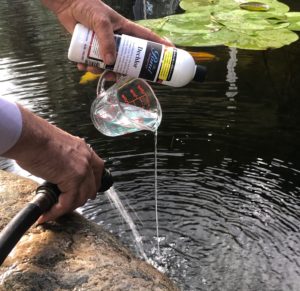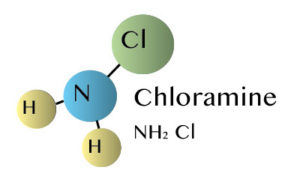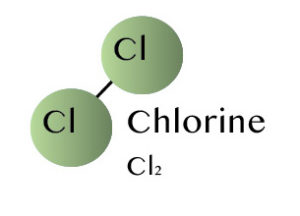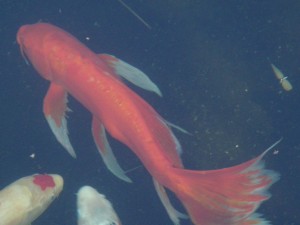When adding water to a pond, the tap water that comes from your hose contains chlorine and chloramines, which are harmful to your fish. Chlorine is toxic to most aquatic life, and it can cause stress and bad burns to the fish once it reaches the gills and its internals. Chlorine will cause burns upon contact, damaging the gills, scales, and breathing tissue of goldfish and koi. Also, interestingly, it readily enters the blood stream after it passes through the gills, causing internal burning, stress, and significant pain to the fish. The solution to this is to add the Pond Company’s Dechlor. Dechlor is short for a water dechlorinator, which is a water conditioner that neutralizes the chlorine, chloramine, and other heavy harmful substances. Dechlor should always be used whenever we add water to a pond, and whenever we do a water change to neutralize the chemicals before they affect the fish and the ecosystem. A bottle of the Pond Company’s Dechlor can be purchased for only $17.95 (see store), please give us a call if you are interested in purchasing (626)-284-5937 or drop us an email at: info@thepondcompany.com.
Chlorine & Chloramine Kill!
What is Chloramine?
Chloramine is used to bond chlorine to water. It is added by our metropolitan water districts in combination with chlorine to sanitize and disinfect the tap water that comes to your home and business. Sanitize kills everything living without discretion, including your fish!
Chloramines first started to be used in the 1980s. Prior to that time, Chlorine would rapidly dissipate from the water, but Chloramines make Chlorine stay in the water for a longer period of time.
Chloramines are a group of chemical compounds that contain Chlorine and Ammonia. Chloramine locks Chlorine and Ammonia to the water molecule, so it stays active in the water for a longer period of time.
Although we are told that the use of Chloramine in our water makes it safe for humans to drink (debatable given all the bottled water we buy), it is definitely harmful to fish. Chloramines are toxic to fish, because the fish will take up chloramines directly through their burned gills into their blood stream – not good! We recommend that the water used for your pond always be free of Chloramines. (See blog on how to treat for Chlorine & Chloramine)
Feeding Fish During Cold Weather
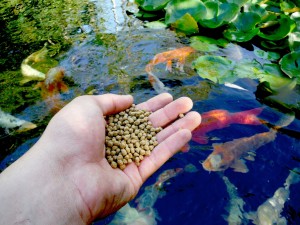 Fish are cold-blooded animals. Their metabolism is based on the temperature of the water they live in. Warmer water creates faster metabolisms, so fish will eat more. Colder water creates slower metabolisms, so they will eat less food. In fact, it’s recommended at 50 F / 30 C you stop feeding goldfish and koi altogether. The intestinal tract of the koi is about 2 or 3 times the length of their body and the digestion of nutrients can take anywhere from 2-3 days! If the water is too cold when the fish eat, the food will spoil before it passes out of their long intestinal track. This leads to all types of problems sickness, diseases, digestive problems, etc. Normally they will NOT eat when it is this cold and the uneaten food will only spoil, clog and over load your filter system. This can disturb the pond balance and possibly create an unhealthy and detrimental situation. Thus note at 50 F / 30 C and below DO NOT FEED YOUR FISH!
Fish are cold-blooded animals. Their metabolism is based on the temperature of the water they live in. Warmer water creates faster metabolisms, so fish will eat more. Colder water creates slower metabolisms, so they will eat less food. In fact, it’s recommended at 50 F / 30 C you stop feeding goldfish and koi altogether. The intestinal tract of the koi is about 2 or 3 times the length of their body and the digestion of nutrients can take anywhere from 2-3 days! If the water is too cold when the fish eat, the food will spoil before it passes out of their long intestinal track. This leads to all types of problems sickness, diseases, digestive problems, etc. Normally they will NOT eat when it is this cold and the uneaten food will only spoil, clog and over load your filter system. This can disturb the pond balance and possibly create an unhealthy and detrimental situation. Thus note at 50 F / 30 C and below DO NOT FEED YOUR FISH!
The Life Cycle of a Mosquito
 There are 2500 different type of mosquito species throughout the world of which 150 of those species are in the Untied States. 52 species occur here in California. All mosquitos must have water to complete their life cycle. The water can range from snow melt to sewage effluent and it can be in any container imaginable. Mosquito larvae are identified by the type of water they lay their eggs in. The adults also show a preference for the type of sources in which to lay their eggs. They lay their eggs in places like tree holes that hold water, tide water pools, sewage effluent ponds, irrigated pastures, rain water collect, ect.
There are 2500 different type of mosquito species throughout the world of which 150 of those species are in the Untied States. 52 species occur here in California. All mosquitos must have water to complete their life cycle. The water can range from snow melt to sewage effluent and it can be in any container imaginable. Mosquito larvae are identified by the type of water they lay their eggs in. The adults also show a preference for the type of sources in which to lay their eggs. They lay their eggs in places like tree holes that hold water, tide water pools, sewage effluent ponds, irrigated pastures, rain water collect, ect.
Mosquitos have unique feeding habits in which the female mosquito will feed on man and other animals. The male mosquito feeds only on plant juices. Some female mosquitos prefer to feed on one type of animal or they can feed on a variety. Female mosquito feed on man, domestic animals, such as cattle, horses, goats, etc; all types of birds; all types of wild animals and they also feed on snakes, lizards and frogs.
Female mosquitos need to get a sufficient blood supply to develop eggs. If they don’t get this meal, then they will die without laying eggs. There are some species that can lay viable eggs without getting a blood meal.
The length of life of the adult mosquito depends on different factors: temperature, humidity, sex of the mosquito and time of year. The male mosquito lives very short time, which is about a week; and females live about a month depending on the above factors.
There are four distinct stages of life that a mosquito goes through: Egg, Larva, Pupa, and Adult.
Eggs: The eggs are laid one at a time and float on the surface of the water. Culex and Culiseta species, the eggs are stuck together in rafts of a hundred or more. Anopheles and Aedes species do not make egg rafts but lay their eggs separately. Culex, Culiseta, and Anopheles lay their eggs on water, but Aedes lays their eggs on damp soil that will be flood with water. Most eggs will hatch into larvae within 48 hours.
Larva: Larva live in the water and swim to the surface to breathe. After each molting, they shed their skin four times growing larger. Most larvae have siphon tubes for breathing and hang from the surface of the water. Larva feed on micro-organisms and organic matter in the water. The larva changes into a pupa on the fourth molt.
Pupa: The pupal stage is a resting, non feeding time. This is when the mosquito turns into an adult. It will take about two days before the adult is fully developed. The pupal skin will split and the mosquito will emerge when development is complete.
Adult: The adult mosquito will rest on the surface of the water for a short time to let itself dry and all its parts harden. This will give the wings a chance to dry so it can fly off.
Temperature play a big part during the life cycle of a mosquito. For instance, the Culex tarsalis might go through its life cycle in 14 days at 70 F and take only 10 days at 80 F.
The Answer: Mosquito Fish
Stressed Out Koi
Koi keeping is an important part of Pond Care and stress is an impending part of it. We all go through stress in our lives to being uncomfortable and new to something. Fish living out in nature would simply swim away from stressful conditions, but when they are confined in a pond or tank there is no way for them to swim away. Ammonia levels can get too high and this can cause them a lot of stress. Fish have a hard time dealing with change in their environment, including temperature. That is why when you move any fish from one water source to another they need to be acclimated before being put in. This goes for pH, hardness and alkalinity of its new home.
Koi Facts
Life Span of Koi: 60+ Years
Great info from Ozarkkoi!
Determining the age of a koi fish, also known as nishikigoi, is not an easy task. Some signs to take into consideration are the variety, coloration, appearance and size of the koi fish in question.Lastly, the size of your koi fish will help determine its age. Mature nishikigoi can reach 36″ or more in length. If your koi fish is considerably smaller, it is younger in age or its growth has been stunted.
